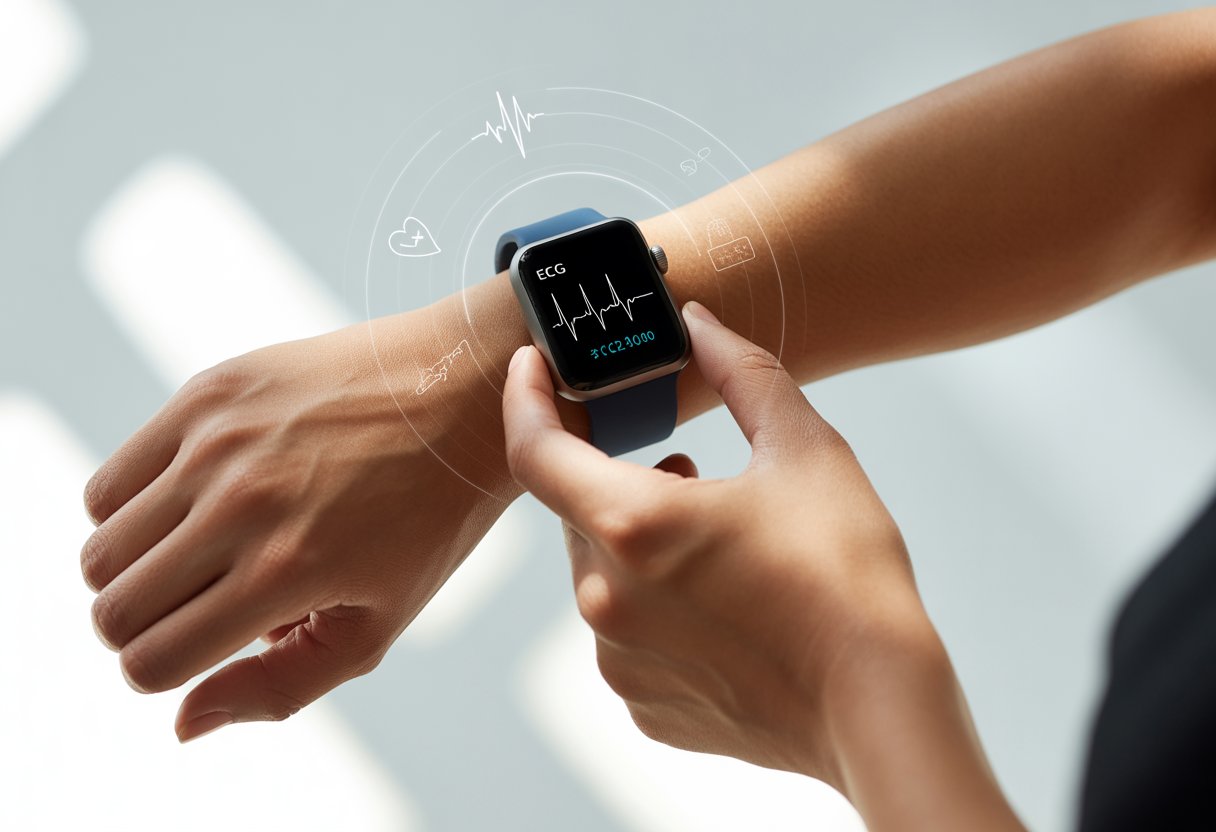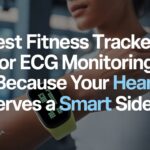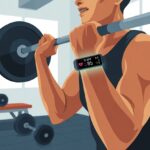These days, our wrists might be smarter than those old school calculators we used to lug around. It’s wild that our smartwatches can now peek inside our hearts—literally.
Using a smartwatch for ECG readings is honestly easy. Just wear the watch, open up the ECG app, and follow a couple of on-screen prompts. No need to be a doctor.

Let’s be real: most of us bought these watches hoping they’d make us walk more, but then got distracted by the whole “secret agent” vibe of checking our heart’s rhythm. With just a tap and a short pause, we get instant feedback on our heart health—sometimes while sitting on the couch, or, let’s be honest, wandering the snack aisle.
If you’ve ever wanted to brag about your heart’s electrical activity, well, now you can.
Before we go any further, let’s clear something up: you don’t need to be a tech wizard to do this. All it takes is your watch, a finger, and a pinch of patience—it’s painless, I swear.
You’ll probably impress your doctor and maybe your dog with your new ECG superpowers.
What Is an ECG and Why Do It With a Smartwatch?
We all have a heart—unless you’re a robot or maybe my old gym teacher. Keeping tabs on its rhythm actually matters.
Now, thanks to some pretty clever tech, we can monitor our heart’s electrical activity with just a smartwatch. No wires, no sticky pads, no looking like you just escaped from a hospital.
Understanding Electrocardiograms
An electrocardiogram (ECG or sometimes EKG—let’s not argue about spelling) measures the electrical activity of the heart. Each heartbeat sends out tiny electrical signals.
The ECG picks up those signals and draws them as a graph.
This squiggly chart shows if your heart’s humming along or maybe doing the cha-cha when it shouldn’t. Doctors use ECGs to spot heart issues like arrhythmias (that’s when your heart dances to its own beat), heart attacks, and a few other things.
Before, getting an ECG meant a trip to the doctor and a bunch of sticky pads all over your chest. Not exactly a fun afternoon.
Comparing Smartwatch ECGs to Traditional 12-Lead EKGs
A standard 12-lead EKG uses twelve electrodes on your chest and limbs. It catches your heart from a bunch of angles, kind of like those slow-motion scenes in action movies.
Doctors get a detailed look at what’s happening inside.
Smartwatch ECGs work differently. They usually use just one or two electrodes—one on the back of the watch, and one you touch with your finger.
So instead of an action movie, you get a quick selfie of your heart’s activity. It’s not as detailed as the full setup, but it still does a solid job spotting irregular rhythms like atrial fibrillation.
If your watch flags something weird, that’s your cue to check in with a real doctor. Want more info? Here’s a good read on smartwatch ECGs versus traditional EKGs.
Benefits of ECG Monitoring on Your Wrist
With a smartwatch, checking your ECG gets ridiculously easy. Tap a button, touch the crown, and let the magic (okay, science) do its thing.
It takes about 30 seconds—less time than it takes my dog to find another sock to chew.
One big perk is being able to check your heart rate and rhythm whenever you want, even if you feel totally fine.
Spot checks can catch problems early, so you can do something before things get serious.
Smartwatches save your ECG results, so you can show your doctor a whole gallery of heart graphs. For anyone with heart conditions, or just the curious, having this on your wrist makes heart care way less awkward than undressing for a checkup.
If you want to see how it all works, check out this guide to using smartwatch ECGs.
Getting Started: Setting Up Your Smartwatch for ECG Readings
Before we can spy on our own hearts, we need the right tools and apps. Not every smartwatch is cut out for this, so let’s figure out what you need and how to get it set up.
Compatible Devices and Models
Not every watch can pull off ECG readings. The Apple Watch Series 4 and newer have the ECG feature, so if you’re still rocking a Series 3, it’s probably time to upgrade or just use it as a regular watch.
Samsung’s Galaxy Watch3 and Watch Active2 also have ECG. Garmin has joined the party with some newer models, but not all Garmins do ECG.
Always check your model’s specs before you get your hopes up. Make sure your smartwatch actually lists ECG in its features—or you’ll just be pretending.
Here’s a quick table for reference:
| Brand | Model Example | ECG Feature |
|---|---|---|
| Apple | Series 4 or newer | Yes |
| Samsung | Galaxy Watch3+ | Yes |
| Garmin | Varies | Check model |
| Fitbit | Sense, Charge 5 | Yes |
Installing and Configuring the ECG App
If your watch can handle ECG, it’s time to get the app. On Apple Watch, the ECG app usually comes pre-installed. If it’s missing, just grab it from the Watch app on your iPhone.
Samsung folks need to install the Samsung Health Monitor app on both the watch and the paired phone. Android users, you might have a few extra steps—because why make it easy? Garmin owners set up the ECG app through Garmin Connect, following the prompts to connect the watch and your account.
Garmin’s official guide walks you through it.
Be ready to enter some health info and click through a few permissions. These apps might care about privacy even more than you do, so don’t skip setup or you’ll get more pop-ups than heartbeats.
Syncing with Your Smartphone and Health App
Now, time to connect everything. Your smartwatch, smartphone, and health app need to talk to each other.
Apple Watch sends ECG data straight to the Apple Health app. Samsung watches sync with Samsung Health, but you’ll need the right version of the app on your phone.
Garmin does the same, sending data to Garmin Connect, so you can geek out over your own heart stats. Turn on Bluetooth and follow the steps to make sure everything’s connected.
Keeping your apps and watch updated helps avoid annoying errors. If you get stuck pairing devices, try restarting them. It’s basic, but hey, it often works.
Checking for FDA Approval and Supported Regions
Not every ECG app is legal to use everywhere. In some places, you can only use the ECG feature if the app or device has FDA or local approval.
Apple and Samsung both have FDA approval in the US, so your readings actually count for something. But don’t get too excited before checking if it’s available in your country.
Some regions block ECG because of regulations, so you don’t want to find out after setup that you’re out of luck. You can usually check in the health app or on the manufacturer’s support page.
If your device says “ECG not available in your region,” it’s just following the rules. If you’re in a supported area, you’re all set—and maybe a little smug compared to friends who don’t have FDA-approved wrist ECG.
How to Take an ECG Reading With a Smartwatch
It’s not rocket science, but getting a good ECG reading from your smartwatch takes a tiny bit more than just smashing a button. Most of us just want to know—are our heartbeats normal, or are they going wild?
Preparing for a Clear ECG Reading
Let’s not mess things up before we start. Wipe your wrist clean—no sweat, lotion, or ketchup (hey, it happens).
Make sure your watch fits snug but not like it’s trying to cut off circulation.
It helps to sit down and rest your arm on a table. If you’re running, jumping, or waving at the neighbor’s dog, your ECG might look like modern art.
Keep your phone and other electronics away for a minute, since they can mess with the reading.
Check your battery before starting. If your watch dies halfway through, you won’t get far with heart rate tracking.
And seriously, silence those notifications—nobody wants a text during a heart check.
Step-by-Step ECG Measurement Process
Ready for the main event? Open the ECG app on your smartwatch. Usually, you’ll see an icon shaped like a heart or a squiggly line.
Once you’re set, put your finger on the side button or crown, depending on the watch.
Hold still for about 30 seconds while the watch records your heart’s electrical signals. Try not to air guitar during this part.
When it’s done, you’ll see results like “Normal Sinus Rhythm” or maybe a heads-up about something unusual.
If the results worry you, most watches can send them to your doctor with just a tap.
For extra details, check out this helpful guide to smartwatch ECGs.
Understanding Heart Rate and Rhythm Detection
Alright, let’s try to make sense of those squiggly lines. The ECG readings on our smartwatch show both heart rate and whether the rhythm is steady or just making up its own tune. Heart rate tells us how many times our heart beats per minute, while rhythm detection checks for weird patterns like atrial fibrillation.
A lot of smartwatches can catch things a basic heart rate monitor would totally miss. That’s actually pretty handy, since some heart issues hide in the rhythm, not just in the speed. If the ECG feature gives us the all-clear, awesome—but if we’re feeling off, we should still talk to a doctor.
Sometimes the results come back as inconclusive, especially if we fidgeted or moved. If that happens, we just try again and do our best statue impression. There’s a good overview of ECG smartwatches and their heart monitoring features if we feel like digging into the details.
Interpreting the Results: What Your Smartwatch Tells You
When our smartwatch throws heart data at us, it can feel like reading a secret code. But with a bit of know-how, we can figure out if our heart’s keeping a steady beat or just freestyling.
Normal Sinus Rhythm vs. Irregular Heart Rhythm
A normal sinus rhythm is like that friend who’s always on time. If our smartwatch says “Sinus Rhythm,” it means our heart’s electrical signals are steady and regular. The heart’s beating in a predictable pattern, starting where it should in the right atrium.
An irregular heart rhythm, though, sets off the smartwatch’s warning. If the device notices skipped beats, extras, or uneven timing, it’ll flash a notification about an “irregular rhythm.” Some watches even show this as a graph—normal rhythm looks like smooth hills, but irregular rhythms look like a row of jagged peaks after an earthquake.
So, normal sinus rhythm means steady and predictable. Irregular rhythm means wobbly and all over the place. Not every alert is a big deal, but at least now we know why our wrist keeps buzzing during movie night.
Spotting Signs of Atrial Fibrillation and Other Heart Conditions
Atrial fibrillation (AFib) really is the heart’s version of a sugar-rushed five-year-old. When a smartwatch detects AFib, it’s picking up on the top chambers quivering instead of pumping smoothly. That can make the heartbeat fast and uneven.
Most smartwatches focus on AFib detection, since it’s common and raises stroke risk. If our watch shows “Possible Atrial Fibrillation,” that’s a cue to call a real doctor—preferably one who doesn’t need charging overnight.
Other heart quirks, like rhythm pauses, might pop up too, but AFib is the main thing these devices track. They can’t spot heart attacks or complicated stuff. We won’t get a diagnosis, but we might get a “Hey, you should talk to someone.”
Sensitivity and Accuracy: Can You Trust the Data?
Can we trust our lives to a smartwatch? Sort of, but not entirely. The Apple Watch ECG app and similar gadgets do a decent job catching AFib, but they’re not perfect. Sensitivity means they catch most real AFib, but sometimes they’ll shout “fire” when it’s just burnt toast.
Accuracy depends on how still we sit, if our skin is dry, and if our watch feels like cooperating. Movement and bad contact can mess up the results. While these devices help us catch irregular heart rhythms early, they’re no substitute for a real ECG or a doctor.
If we get confusing or repeated irregular alerts, it’s time to check in with a healthcare professional. At the end of the day, smartwatches are helpful sidekicks—not the main hero.
Health Insights: Leveraging ECG Data for Early Detection
When we use our smartwatch for ECG readings, we’re doing more than just staring at squiggly lines. We’re collecting important health data that could warn us about problems before they ruin our weekend. That makes our wrist gadget surprisingly useful for spotting early warning signs.
Identifying Early Signs of Heart Attacks and High Blood Pressure
Let’s be real—no one wants their smartwatch tattling to the doctor. But catching a heart attack early? Yeah, we’d rather know. Smartwatch ECGs can pick up unusual heart rhythms, which sometimes hint at changes in blood flow or stress on the heart.
Irregular rhythms like atrial fibrillation might show up in our daily checks, giving us a heads-up before things get dramatic. If we notice repeated high resting heart rates or sudden changes, that could mean high blood pressure is lurking.
Here’s what our smartwatch might flag:
- Heart rates that are way too fast or slow
- Irregular beats that don’t match our inner drummer
- Big changes in rhythm while we’re just chilling
If we spot these patterns, we might get to the doctor before things get serious. Smartwatches have made it easier to get good readings at home, which saves time and maybe even a bit of heart muscle. For more on the role of ECG smartwatches in health monitoring, there’s a detailed guide out there.
Using Health Data to Monitor Symptoms Like Chest Pain
We’ve all had that moment: chest pain after running for the bus, or maybe while watching a scary movie. Our smartwatches can’t fix us, but they do give us data to help figure out if it’s just nerves or something more serious.
Here’s how we can use our data:
| Symptom | What ECG Data Can Show | What to Do |
|---|---|---|
| Chest pain | Abnormal rhythms or skipped beats | Track symptoms, call if repeat |
| Dizziness | Sudden heart rate drops | Sit, check data, inform doc |
| Shortness of breath | Change in rhythm with activity | Note timing, see pattern |
If we log symptoms as they happen, the ECG reading can help doctors see the bigger picture. That makes our next appointment a lot less of a guessing game.
Tracking patterns over days or weeks means we’re not just saying “it hurts”—we’re showing real evidence. For anyone curious about how accurate these features are for spotting AFib, check out this smartwatch ECG accuracy study.
Limitations and Considerations of Smartwatch ECG Monitoring
Wearing a smartwatch might make us feel like superheroes, but it’s not the same as having a doctor on call. These devices help us keep tabs on our hearts, but there are some things we can’t ignore.
ECG Readings: Not a Replacement for Professional Diagnosis
Let’s be honest—our smartwatch is clever, but it’s just got one sensor. Standard ECGs in clinics use twelve, which gives way more detail about how our heart’s doing. With only one, the smartwatch could miss changes that a doctor’s test would catch.
A smartwatch ECG might flag atrial fibrillation or an extra beat, but it’s not perfect. Studies say it can give us a heads-up, but we shouldn’t try to play doctor ourselves. Health experts agree that smartwatch ECGs are helpful for early detection, not for replacing a full clinic test.
When to Seek Medical Attention
If our watch tells us something’s off, that’s not the time to ignore it while we binge-watch with a tub of ice cream. Some symptoms need immediate action.
Call for help if you notice:
- Chest pain
- Trouble breathing
- Feeling weak or dizzy
- Fainting
We can’t rely on the watch alone for a diagnosis. If our smartwatch keeps flagging irregular readings—especially with symptoms—it’s time to let the professionals take over. Even the best device can’t replace a real medical opinion.
Honestly, sometimes the best thing our smartwatch does is tell us, “Go see a doctor, now!”
Tips, Tricks, and Troubleshooting for Optimal ECG Use
Getting the most out of our smartwatch ECG app actually matters. With a few tweaks, we can get better readings and fix problems before we start panicking.
Improving ECG Accuracy Through Best Practices
Even the fanciest smartwatch needs our help to get a good ECG. The most important thing? Keep our skin clean and the back of the watch free of grime—pizza grease is not a conductor.
For the best results, we should sit down and chill before starting. If we just sprinted to catch the bus, let’s give our hearts a minute to calm down.
Steps for sharper ECG readings:
- Make sure the watch fits snugly.
- Rest our arm on a table—think awkward school photo pose.
- Try not to talk or laugh (silent giggles are fine).
- Touch the crown or electrode gently, just like the device says.
This gives us a better shot at a reading that doesn’t look like a toddler drew it.
Resolving Common Issues With ECG Apps
Sometimes, our smartwatch just won’t cooperate. If the ECG app isn’t working, maybe our fingers are too dry or too sweaty—seriously, “just right” moisture matters. Cleaning the crown and back with a soft, damp cloth can help, as plenty of Apple Watch users found out.
If we get error messages, try restarting or updating the app. Pairing problems? Unpair and repair the watch—yeah, it’s a pain. If ECG readings suddenly go wild, it’s probably user error, not a sign we’re turning into superheroes. Try the steps above, keep still, and avoid distractions like cats or siblings with water guns. If nothing helps, maybe it’s time to contact support—but hopefully it won’t come to that.
Future Innovations: The Next Wave of Wrist-Based ECG
Smartwatches keep getting smarter, and our wrists are turning into mini medical centers. The ECG feature on our smartwatch might soon surprise us with even more tricks to spot health problems earlier and easier.
Emerging Features in Smartwatches
Soon, some smartwatches might record a single-lead ECG without us even lifting a finger. Automatic detection, instead of manual start, could let us catch rhythm changes all day—like having a tiny doctor on our arm, but less chatty.
We’ll probably see better ECG accuracy too. With new sensors, smarter algorithms, and improved electrodes, future devices might finally know the difference between a skipped beat from tripping and a skipped beat from heart trouble.
Some wild features are in the works, like extra electrodes or using both wrists for more detailed ECGs. More data points mean more precise readings—and maybe fewer panicked texts to our doctors.
Smartwatch ECG features—coming soon:
- Hands-free, automatic recordings
- Improved accuracy with advanced sensors
- Multiple-lead options for in-depth reports
Integration With Broader Health Monitoring Systems
Let’s be honest—our watches can’t do everything on their own. Lately, smartwatches have started teaming up with other health gadgets, syncing ECG data with sleep trackers, oxygen sensors, and even step counters. That’s great news for anyone who’s competitive about their daily steps.
Some platforms now connect smartwatch ECGs directly to electronic health records. So, our doctors can actually check out our heart rhythms almost in real time. That could help them spot trends or issues when we show up for a regular checkup.
Soon, alerts and notifications might sync across all our devices. If our hearts start acting up, we could hear from our smartwatch, phone, or even get a reminder on Grandma’s calendar. It’s more than just tracking heart rhythm—it’s like building a personal health control center right on our wrists.
Want to dive deeper into how smartwatches are moving past just ECGs? You might like this guide on wearable ECG smartwatches.
Honestly, it looks like we’ll be able to track pretty much everything soon. Maybe keeping tabs on our health will finally be easier than finding our car keys.
- Best Bluetooth Headphones for Airplane Travel: Drown Out Crying Babies in Style - December 8, 2025
- How to use Bluetooth headphones with an intercom system and Finally Escape Tangled Wires - December 7, 2025
- Best Fitness Trackers for Silent Alarms: Wake Up Without the Drama - December 7, 2025






